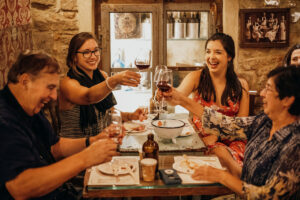Last Updated on December 20, 2025 by Emma Fajcz | Published: March 28, 2019
As we say here in Rome: it’s never too cold to eat gelato, and never too hot to eat carbonara.
Compared to Rome’s other pasta classics, pasta alla carbonara is the new dish on the block. No trace of it can be found before the 1950s, but in these few years it has become, perhaps, the dish most beloved by Romans and certainly the dish of which they’re most protective.
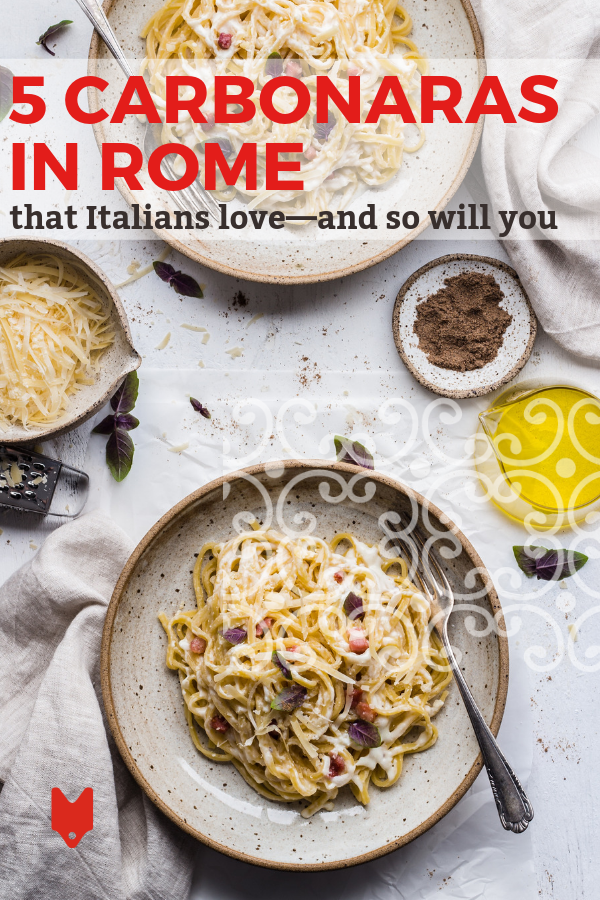
The origins of pasta alla carbonara are lost. Depending on who you ask, it’s connected either with U.S. soldiers during WWII, who would cook it to use up their bacon and powdered egg rations, or with charcoal burners (carbonari) who invented it as a lunchtime protein burst. Judging by the name, the second theory seems more likely, but alas, we might never know the truth.
On the surface, carbonara is very simple: crispy, pan-fried guanciale (cured pork cheek) tossed together with pasta, and a mixture of egg and pecorino Romano cheese. The heat of the just-cooked pasta causes the eggs and cheese to turn into a creamy, buttery, sauce. Though it sounds simple, the sauce can be a bit tricky. If the temperature of the pasta is too high, or—heaven forbid—the eggs and pasta are mixed in a frying pan, the eggs run the risk of being scrambled. And as any Roman will tell you, that is not a carbonara.
Young Romans often debate the finer details of the recipe. Should you really use guanciale, or is pancetta (bacon) okay? Should you use whole eggs or just the yolks? Is it permissible to add anything else to the recipe? In fact, some Romans get quite upset when they discover foreign recipes featuring ingredients like peas or cream.
But the reality is even Romans mix it up sometimes, so “real carbonara” comes in many forms. Are you ready to step into the inner circle and enjoy carbonara as the Romans do? Here is our guide to the five places with the best carbonara in Rome.
SEE ALSO: Best-Ever Traditional Roman Carbonara Recipe
1. Classic carbonara
If you want to try pasta alla carbonara just like a Roman’s nonna would make, then Armando al Pantheon is your place. They’ve been serving carbonara since 1961, since the pasta’s early days. They take their pasta carbonara so seriously that they recently held a carbonara and champagne pairing dinner. Couple this, along with the restaurant’s location—a stone’s throw from the historic Pantheon—and they are certainly in the running for the best traditional carbonara in Rome.
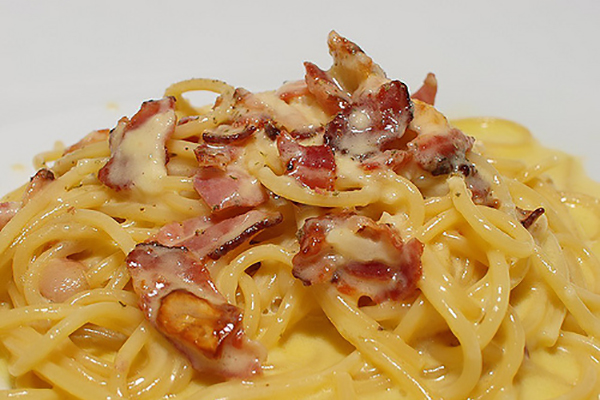
2. People’s choice
If you ask a local where they serve the best carbonara in Rome, you’ll hear one name again and again: L’Arcangelo. Indeed, executive chef Arcangelo Dandini has been recognized as an authority on the dish, and his advice on the techniques can be found all over the Internet. He’s on team yolk-only, which gives his version a deep yellow hue and rich flavor.
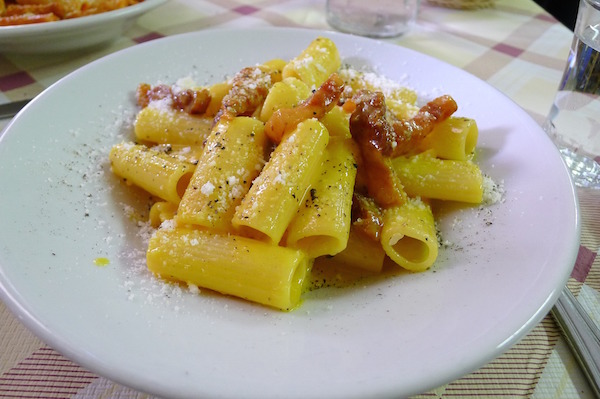
3. Something different
Although Romans often debate what is and is not a carbonara, they are not averse to trying something a little different from time to time. Eggs, a restaurant where everything on the menu features eggs in one preparation or another, have a list of 12 different carbonaras. They range from the classic version through to vegetarian, and each is named for the color of their key, extra ingredient. So, there’s yellow (with saffron), blue (with salt cod and squid ink) and our favorite, fire red, with ‘nduja (a spicy Calabrian sausage).
4. Street food carbonara
Sbanco is a place where two traditional dishes collide—the supplì (deep-fried rice croquette) and the carbonara. Here Romans can get all the flavors of carbonara conveniently encased in a crunchy fried rice croquette, which can be eaten on the fly. Classically speaking, this might not be the best carbonara in Rome, but it’s certainly the best supplì alla carbonara in the city.
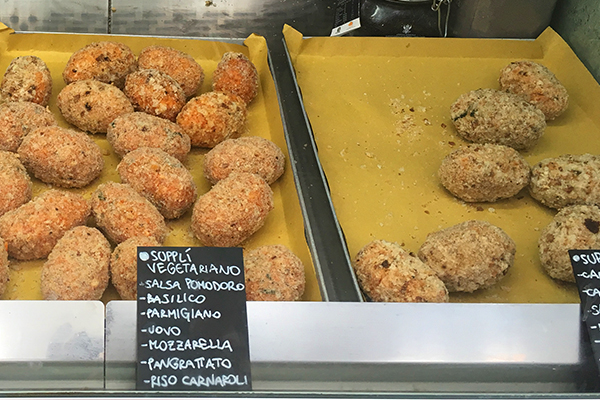
5. Carbonara with a view
Not only is this carbonara a contender for the best in Rome, but it’s the clear winner when it comes to the best carbonara in Rome with a view. The Roof Garden restaurant at the Hotel Forum looks over the Fori Imperiali, which will take you back 2,000 years. They use rigatoncini (small ridge pasta tubes) and serve it on gold-rimmed plates, giving this popular dish an air of luxury.


